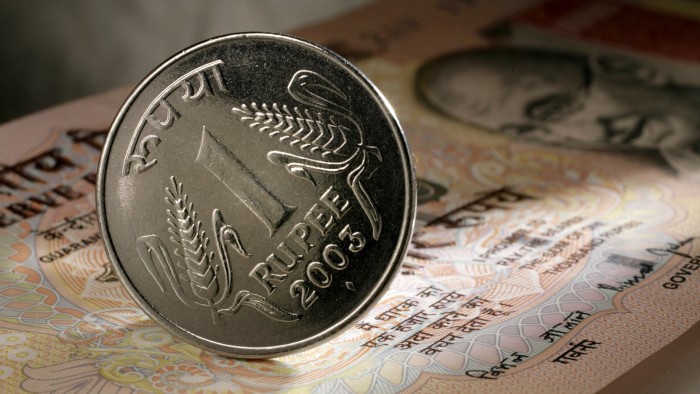Yen seen as only gainer among Asian currencies in Brexit vote

Simply sign up to the Currencies myFT Digest -- delivered directly to your inbox.
China’s renminbi and India’s rupee are seen as the biggest casualties among Asian currencies in the event the UK votes to leave the EU, according to an estimate from Malaysia’s Maybank.
The Japanese yen is widely expected to be the biggest gainer among Asian currencies in the event of a Brexit, with Maybank forecasting a potential 11.7 per cent leap in the largest haven currency. At its current level of ¥104.73, such a move would push the yen towards the ¥94 mark against the dollar.
The renminbi and rupee, meanwhile, could lose up to 5.2 per cent and 5.7 per cent respectively. A decision to leave would probably sharpen pressure on China’s central bank which last month set the renminbi at a five-year low on the back of a rising dollar.
South Korea’s won, the Philippines’ peso and the Malaysian ringgit are also set to slide, according to the analysts at Maybank.
“These economies are most susceptible to risk appetite and risk-off could see flight to safety away from assets of these economies to higher quality assets,” they said.
The Singapore dollar and Indonesian rupiah will be least shaken on a Leave vote, Maybank said as “the former [is] seen as a safer haven among ASEAN currencies, while the latter has so far been buffered by portfolio and direct investment flows as sentiment towards Indonesia has improved with the reformist policies of President [Joko Widodo]”.
Although sterling has been most sensitive to changes in opinion polls, a decision to leave is unlikely to trigger the kind of market fallout seen in September 1992, when the pound was ejected from the European Exchange Rate Mechanism, according to analysts at Deutsche Bank.
Alan Ruskin, a currency strategist at Deutsche, said that while the options market was pricing in a 10 per cent chance of an even bigger drop than the 1992 episode, he was not even convinced of those odds
The pound slumped 17 cents against the dollar in a week — the biggest drop against the dollar during the modern era of currencies trading that began in the 1970s.
“The UK referendum date is much better flagged than the pound’s exit from the ERM” Mr Ruskin said. “In 1992, we not only did not know the date when sterling’s ERM band would break, but once it broke, the sterling equilibrium rate was regarded as favouring a much weaker pound.”
Mr Ruskin said: “While there is enormous gap risk on a Brexit, ‘offside positions’ and to a lesser degree valuation considerations will provide much less impetus for further immediate sterling downside acceleration.”
Comments